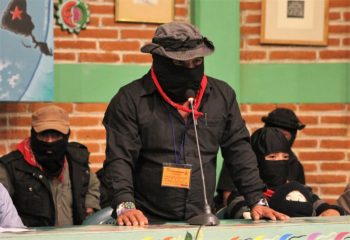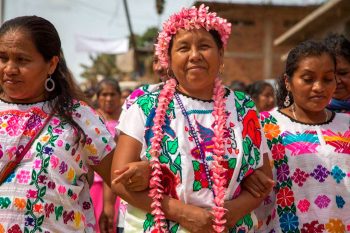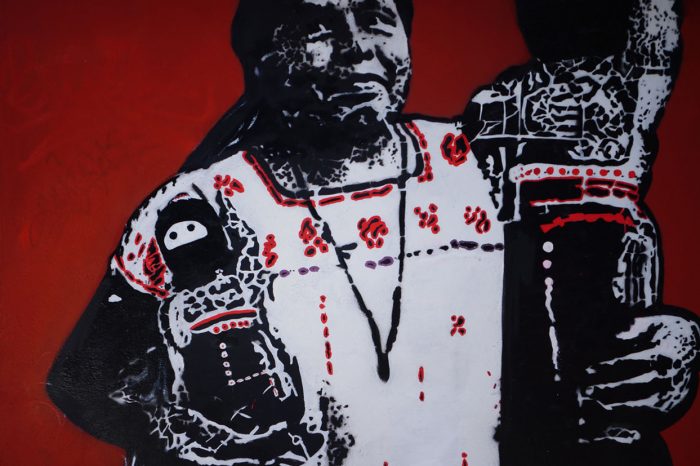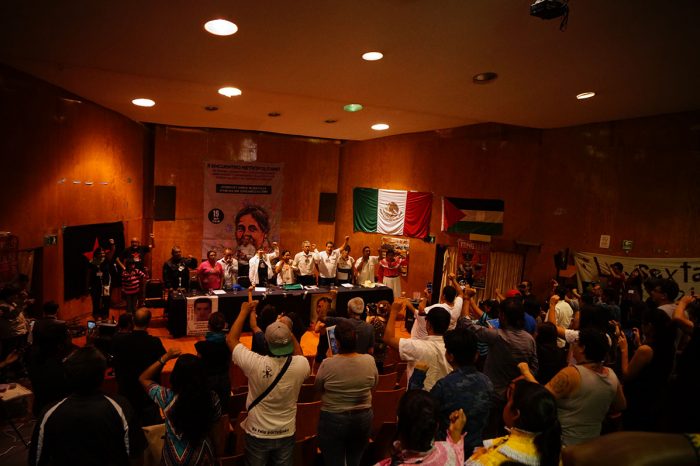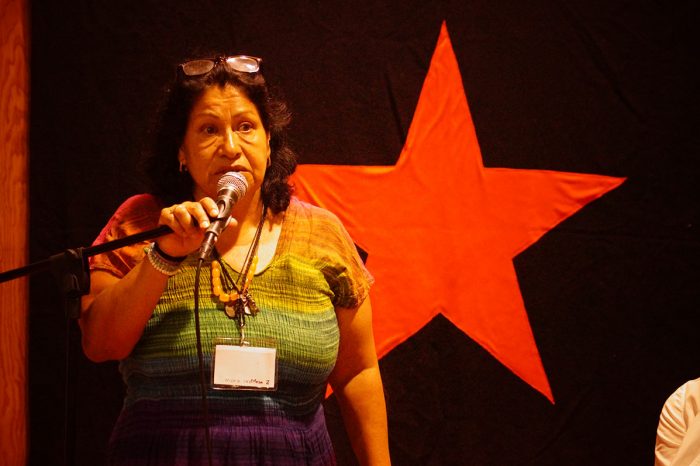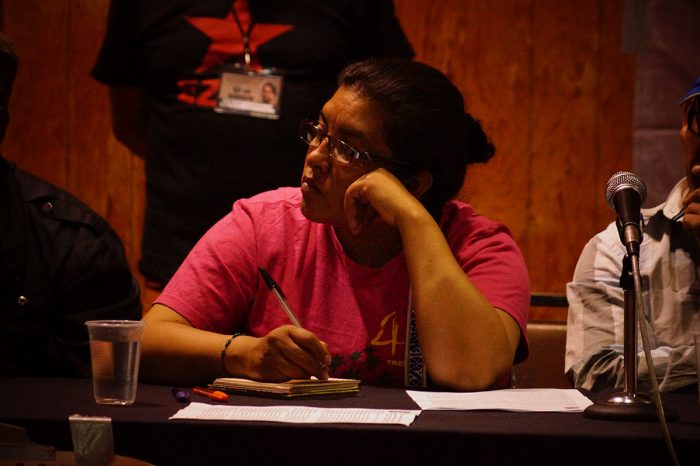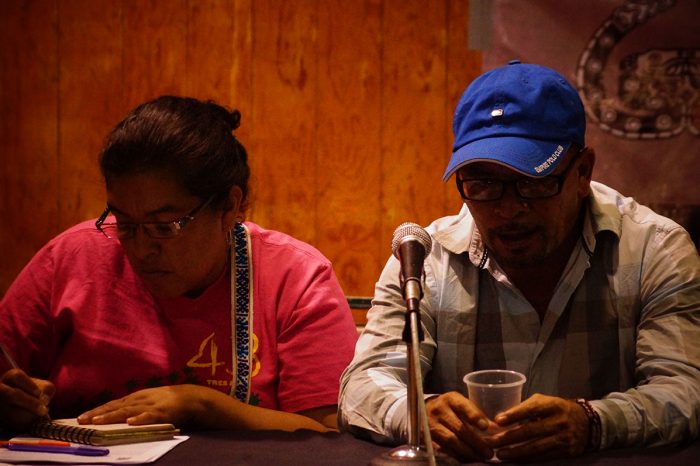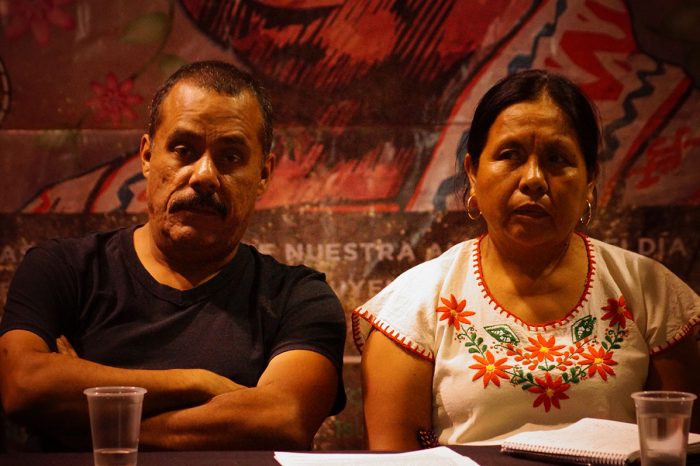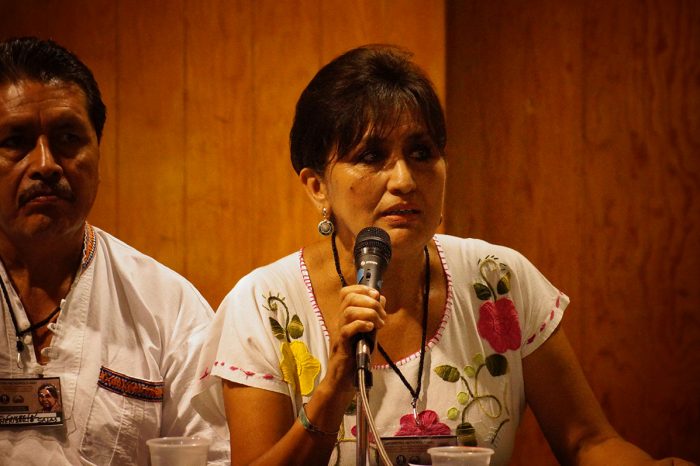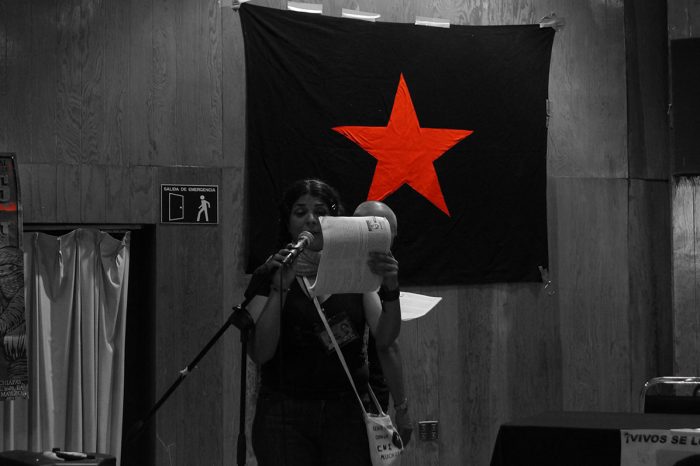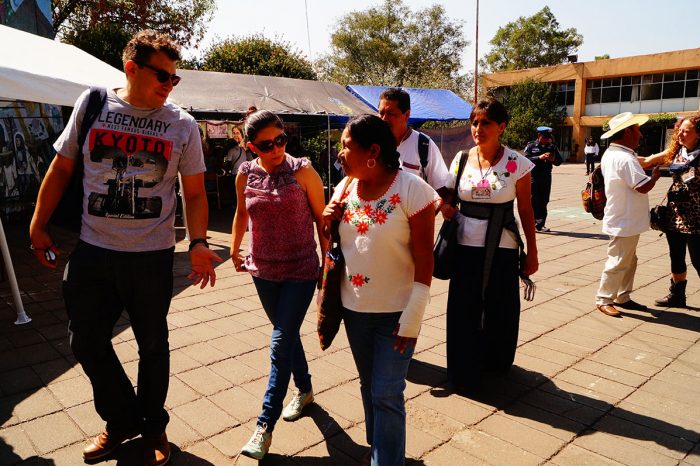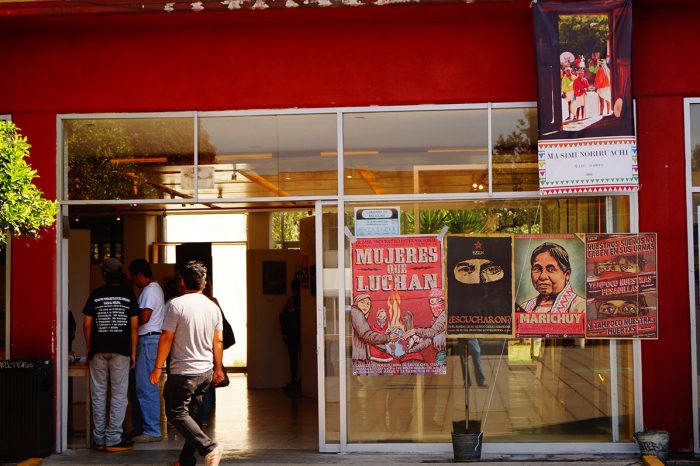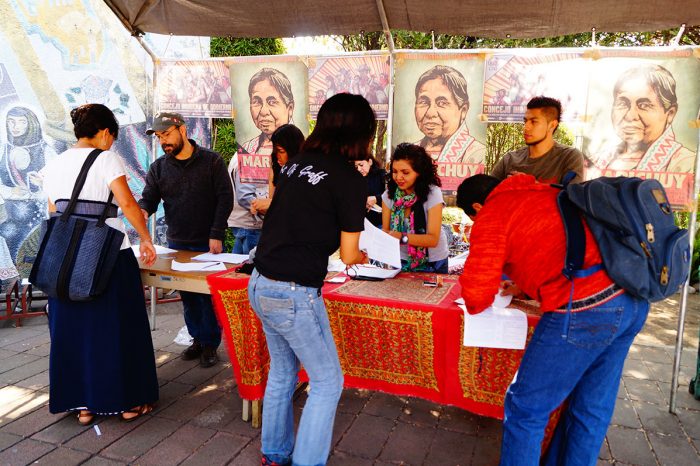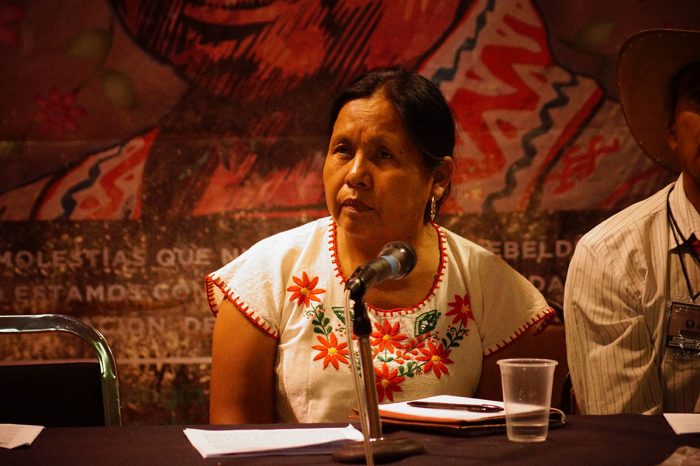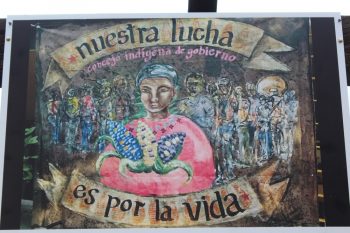
Comunicados EZLN
300, Part I: A Plantation, a World, a War, Slim Chances.
Words of the EZLN’s Sixth Commission at the Gathering of Support Networks for the Indigenous Governing Council (CIG) and its spokeswoman
(Expanded version)
Given time restrictions, we were unable to present these thoughts in full during the gathering. We promised you the full version, and we include the full transcription here, including the parts that were not read at the gathering. You’re welcome. Don’t mention it.
300
Part I:
A Plantation, a World, a War, Slim Chances.
August, 2018.
Subcomandante Insurgente Galeano:
Good morning, thank you for coming, for accepting our invitation and for sharing your words with us.
We are going to begin by explaining our way of doing analysis and evaluation.
We start by analyzing what is happening in the world, then move to what is happening at the continental level, then to what is happening in this country, then to a regional and finally to a local level. From there, we develop an initiative and begin to move back up from a local level to a regional level, then to the national, the continental, and finally the global level.
We think that capitalism is the dominant system at the global level. In order to explain this system both to ourselves and to others, we use the image of a plantation. I’m going to ask Subcomandante Insurgente Moisés to explain this part.
-*-
Subcomandante Insurgente Moisés:
Compañeros and compañeras: we interviewed our own compañeros and compañeras who are our great-grandfathers and great-grandmothers, some of whom are still alive. The following is what they told us and what they helped us understand: how the rich, the capitalists, want to turn the whole world into their plantation.
(Español) A XV años de los Caracoles y JBG, la “Esperanza Zapatista” continúa
Altamirano, Chiapas. 9 de agosto. La sonrisa de los abuel@s, la reflexión de las mujeres, las miradas llenas de curiosidad de los niñ@s, son imágenes que sobresalen en el Festival CompArte Zapatista 2018. “Nuestros caracoles floreciendo están”, “Nuestra lucha no va a terminar”, “democracia, justicia y libertad”, se escucha en las melodías que interpretan las y los indígenas chiapanecos en este también XV aniversario en el cual celebran su decisión de organizarse en Los Caracoles y las Juntas de Buen Gobierno (JBG).
Desde el Caracol de “Morelia”, con canciones y obras de teatro situaciones cotidianas son recreadas por niños, jóvenes y adultos Bases de Apoyo Zapatistas, para ejemplificar lo que viven las familias que han decidido estar en “resistencia y rebeldía”.
Los programas asistencialistas del gobierno federal y estatal son una constante en las dramatizaciones de los rebeldes chiapanecos, sobre como el Estado “desmoviliza la resistencia”. Frente al hostigamiento gubernamental las y los indígenas chiapanecos han respondido con organización y propuestas en rubros que van desde la salud, la educación, la justicia, la alimentación, la seguridad, entre otros.
De manera lúdica y profunda, las y los zapatistas exponen en sus obras teatrales problemáticas en las que se ven refleja@s niñ@s, adolecentes, jóven@s, mujeres, ancianos y hombres de la comunidad. Tales situaciones tienen que ver con el consumismo y su repercusión en problemas de salud, económicos, sociales y culturales.
En una de las actuaciones en el CompArte 2018, se escenifica claramente la línea que sigue el sistema capitalista al afectar a las comunidades: la mala alimentación enferma a la población, la cual tiene que solicitar atención médica costosa, lo que lleva a mujeres y hombres a vender sus pocas propiedades y hasta la tierra para saldar sus deudas. En la otra cara que muestran los indígenas en resistencia en sus escenificaciones, la salud es para toda la población y no se necesita grandes sumas para ser atendidos en sus clínicas y hospitales autónomos. Y también se convoca a trabajos colectivos para apoyar al enferm@.
La historia también se hace presente dentro del CompArte Zapatista, y son abordados pasajes desde la Revolución hasta las pasadas elecciones presidenciales del mes de julio. Problemas sociales como el desempleo, la explotación, la represión, la criminalización de la protesta social, se exponen en el encuentro de las y los indígenas chiapanecos con asistentes nacionales e internacionales.
En el mensaje principal de la Comandancia del EZLN, participan l@s niñ@s: Amado, Defensa Zapatistas junto con el Gato Perro, Esperanza Zapatista junto con su Oso, y Pablito. En la mesa también se encuentran los Subcomandantes Moisés y Galeano, así como el mando de la zona, el Comandante Zebedeo. El sub Galeano ejemplifica el proceso actual del zapatismo con el cuento: “La última mantecada en el sureste mexicano” (AUDIO).
“Cuidar la esperanza zapatista”, es el mensaje que enfatizó el EZLN, ante Comandant@s y miles de Bases de Apoyo Zapatistas, así como asistentes nacionales e internacionales. Los rebeldes chiapanecos indicaron que si sus “sueños y aspiraciones”, no caben en un mundo, crearán otro. “El mundo no es uno solo”, enfatizaron y añadieron que no se puede seguir un solo esquema o concepto. El mensaje principal a los “capataces (gobiernos capitalistas) pasados, presentes y futuros”, al final de la participación de los insurgentes, fue la mano en forma de caracol.
INFORMACIÓN RELACIONADA: https://www.facebook.com/EnlaceZap/
El problema con el zapatismo, dice el Sup Galeano, es que “si sus sueños y aspiraciones no caben en un mundo, imaginan otro nuevo y sorprenden con sus empeños por lograrlo” (AUDIO).
Tejiendo organización en colectivo – Encuentro de redes en apoyo al CIG
Texto, imágenes y audios tomados de Radio Pozol.

